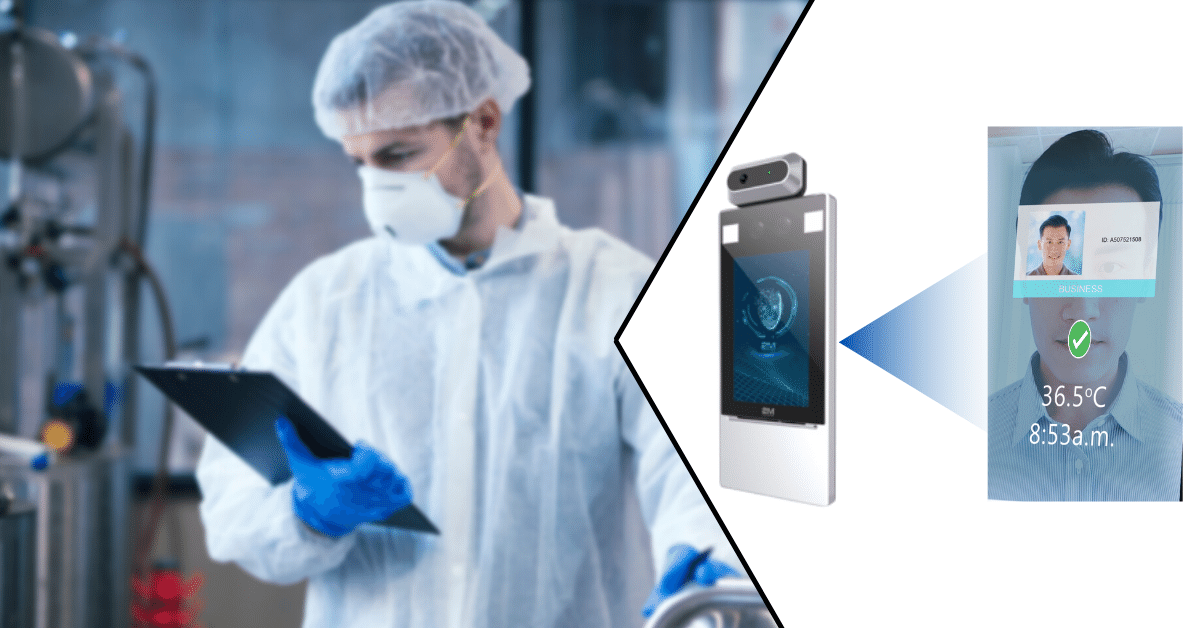In recent years, the use of face recognition access control has been increasing in response to COVID-19 and the need for contactless entry. But in addition to reducing the spread of infection, face recognition access control reduces risks and improves physical security. One industry where heightened physical security is necessary is the food production industry. Here’s how face recognition access control can be used to benefit food production facilities.
What is Face Recognition Access Control?
If you’re confused about what exactly is face recognition access control, we’ll give you brief lesson. Access control refers to the act of restricting access to only authorized personnel. Physical access control involves any method that requires the person to present a physical item for entry, such as a key or an access card. Biometric access control requires the user to present a biometric, which is anything on their body like a fingerprint, iris, or face. Face recognition is a biometric access control; instead of having to use a key or scan a card, the user just has to scan their face with a device. If they are recognized as an authorized person, they will be granted entry.
In general, biometric access control methods are much more secure than physical access controls because biometrics cannot be duplicated or passed onto an unauthorized person to use. They’re also more convenient because they cannot be lost or forgotten at home. But out of the biometric access controls, face recognition is the most advantageous because it does not require any contact like fingerprint scanning and it’s easier to configure than iris recognition.
Benefits for Food Processing Facilities
As said earlier, face recognition is a more secure and more convenient access control solution. But let’s delve deeper into how this method specifically benefits food production facilities.
Eliminates Food Terrorism
Food terrorism is defined as “an act or threat of deliberate contamination of food for human consumption with chemical, biological, or radionuclear agents for the purpose of causing injury or death to civilian populations”. Even though the thought of this ever happening seems outrageous, the World Health Organization recognizes food terrorism as a real threat that could have serious global health implications. Using face recognition access control in food production plants helps to mitigate the chances of food terrorism because it’s more effective at keep out unauthorized people. As discussed earlier, physical access control methods are riskier than biometrics because anyone can copy a key or steal someone else’s access card. Face recognition is more secure because it uses a credential that can’t be copied or stolen.
Tracks Movement Within Facility
Even if an unauthorized individual was able to beat the face recognition access control, their access and movement throughout the facility would be tracked by the system. Every time someone uses the face recognition access control device, their picture, date, and time will be logged into the system. This is useful for facility managers to determine who was where and when in case an incident were to occur.
Reduces Cross-Contamination
A common issue that occurs in food production facilities is cross-contamination. Most of the time, these facilities will have various departments that are dedicated to producing different things. It’s crucial to keep these areas and their workers separate in order to prevent cross-contamination so a method of access control is necessary. However, keys are a hassle to use because each department and each worker will need a different key. And as said before, access cards are not the most secure solution because they can be passed around. Face recognition access control is the ideal solution because it’s more secure and it’s easier to scale each person’s level of access through the system.
Slows Spread of Infection
In addition to providing contactless entry, a lot of devices that are used for face recognition access control (like our terminals and turnstiles here at 2M) are also capable of detecting mask usage and reading temperature through the forehead. This is because forehead temperature scanning and mask recognition rely on the face just like face recognition access control. When a person presents their face on these devices, the system is performing 3 things: scanning their face and looking for a match in the database (face recognition), locating their forehead to read temperature (forehead temperature scanning), and analyzing their face for a face mask (mask recognition). Besides being more secure, face recognition access control devices help to reduce the spread of infection because it ensures that everyone who passes through does not have a fever and is wearing a mask. This not only mitigates infection between workers, but prevents the contamination of food.
Remote Management Capabilities
Food production companies will typically have multiple facilities in various locations that will require an integrated system of managing access and permissions remotely. Physical access control methods cannot be managed remotely because they require a physical component, like a key or a card, to be made and distributed. But with face recognition access control, everything can be set up and managed remotely through the system for a better and more convenient access management system.
Wrap Up
If you’re considering using face recognition access control in your food production facilities, then please give our sales team a call. We offer face recognition terminals and turnstiles so you can get exactly what you need for any location.

